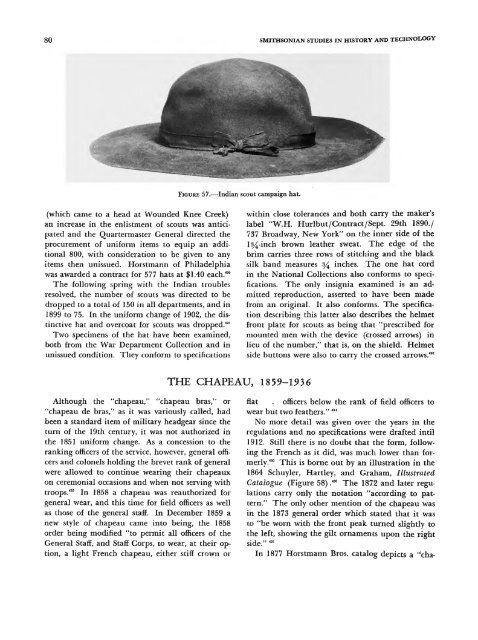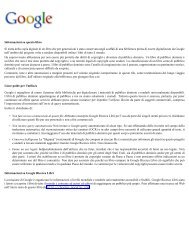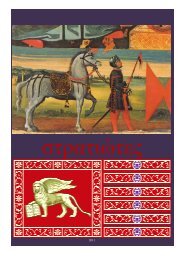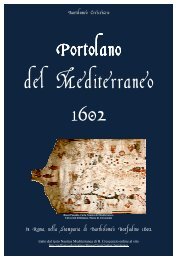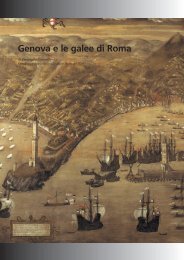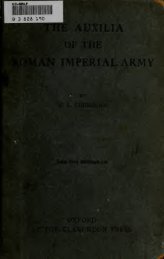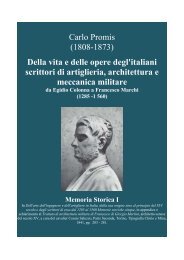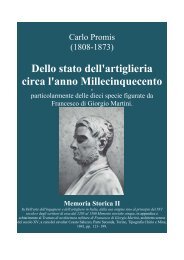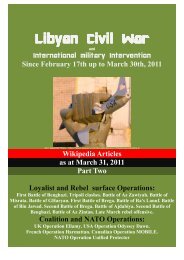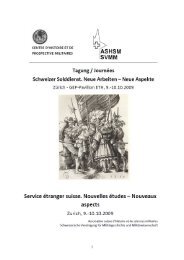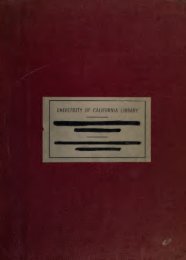United States Army Headgear 1855-1902 - Libreria Militare Ares
United States Army Headgear 1855-1902 - Libreria Militare Ares
United States Army Headgear 1855-1902 - Libreria Militare Ares
- No tags were found...
Create successful ePaper yourself
Turn your PDF publications into a flip-book with our unique Google optimized e-Paper software.
80 SMITHSONIAN STUDIES IN HISTORY AND TECHNOLOGYFIGURE 57.—Indian scout campaign hat.(which came to a head at Wounded Knee Creek)an increase in the enlistment of scouts was anticipatedand the Quartermaster General directed theprocurement of uniform items to equip an additional800, with consideration to be given to anyitems then unissued. Horstmann of Philadelphiawas awarded a contract for 577 hats at $1.40 each.'°°The following spring with the Indian troublesresolved, the number of scouts was directed to bedropped to a total of 150 in all departments, and in1899 to 75. In the uniform change of <strong>1902</strong>, the distinctivehat and overcoat for scouts was dropped.'"'Two specimens of the hat have been examined,both from the War Department Collection and inunissued condition. They conform to specificationswithin close tolerances and both carry the maker'slabel "W.H. Hurlbut/Contract/Sept. 29th 1890./737 Broadway, New York" on the inner side of theI^-inch brown leather sweat. The edge of thebrim carries three rows of stitching and the blacksilk band measures s/^ inches. The one hat cordin the National Collections also conforms to specifications.The only insignia examined is an admittedreproduction, asserted to have been madefrom an original. It also conforms. The specificationdescribing this latter also describes the helmetfront plate for scouts as being that "prescribed formounted men with the device (crossed arrows) inlieu of the number," that is, on the shield. Helmetside buttons were also to carry the crossed arrows.'"'THE CHAPEAU, 1859-1936Although the "chapeau," "chapeau bras," or"chapeau de bras," as it was variously called, hadbeen a standard item of military headgear since theturn of the 19th century, it was not authorized inthe 1851 uniform change. As a concession to theranking officers of the service, however, general officersand colonels holding the brevet rank of generalwere allowed to continue wearing their chapeauxon ceremonial occasions and when not serving withtroops.'"' In 1858 a chapeau was reauthorized forgeneral wear, and this time for field officers as wellas those of the general staff. In December 1859 anew style of chapeau came into being, the 1858order being modified "to permit all officers of theGeneral Staff, and Staff Corps, to wear, at their option,a light French chapeau, either stiff crown orflat . officers below the rank of field officers towear but two feathers." '"'No more detail was given over the years in theregulations and no specifications were drafted intil1912. Still there is no doubt that the form, followingthe French as it did, was much lower than formerly.""This is borne out by an illustration in the1864 Schuyler, Hartley, and Graham, IllustratedCatalogue (Figure 58).'"" The 1872 and later regulationscarry only the notation "according to pattern."The only other mention of the chapeau wasin the 1873 general order which stated that it wasto "be worn with the front peak turned slightly tothe left, showing the gilt ornaments upon the rightside." '"^In 1877 Horstmann Bros, catalog depicts a "cha-


